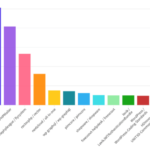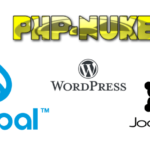 As a developer, you know the importance of efficient and speedy coding. The time it takes to build a web application can be the difference between success and failure. That’s where CakePHP comes in – the rapid development PHP framework designed to streamline your coding journey. With CakePHP, you can code faster, smarter, and with fewer errors.
As a developer, you know the importance of efficient and speedy coding. The time it takes to build a web application can be the difference between success and failure. That’s where CakePHP comes in – the rapid development PHP framework designed to streamline your coding journey. With CakePHP, you can code faster, smarter, and with fewer errors.
CakePHP: A Brief Overview
CakePHP is a rapid development PHP framework that allows developers to create web applications quickly and efficiently. It follows the Model-View-Controller (MVC) architectural pattern and provides a straightforward approach to building applications.
The framework offers several features, such as built-in CRUD operations, validation, and caching, which enable developers to focus on the application’s logic rather than on the infrastructure. CakePHP also supports database abstraction, which simplifies database connectivity and allows developers to work with multiple databases seamlessly.
CakePHP’s modular design makes it easy to expand the framework’s capabilities by adding plugins and custom components. The framework also features built-in security mechanisms, such as cross-site scripting (XSS) and cross-site request forgery (CSRF) protection, which helps developers to build secure applications.
The framework is well-documented and has a large community of developers who contribute to its development. This means that developers can access resources, such as tutorials, videos, and forums, to help them work with the framework effectively.
Getting Started with CakePHP
CakePHP is an open-source PHP framework that simplifies the process of web development. It offers a great set of features that allow developers to build web applications quickly and efficiently. In this section, we will guide you through the process of setting up a CakePHP project for rapid development.
Before we start, you need to ensure that you have a PHP environment set up on your system. You can download and install PHP from the official website (https://www.php.net/). Additionally, the latest version of CakePHP can be downloaded from the official website (https://cakephp.org/).
Setting Up the Project
Start by creating a new project using the CakePHP command-line interface (CLI). Open your terminal, navigate to the folder where you want to create your project, and run the following command:
composer create-project --prefer-dist cakephp/app projectnameThis will create a new CakePHP project with the name “projectname” in the current directory.
Once the project is created, you need to configure it for your local environment by providing database credentials and other settings. The configuration files are stored in the “config” folder of your project. You can edit them using any text editor.
Familiarizing Yourself with the Directory Structure
CakePHP follows the Model-View-Controller (MVC) architectural pattern, which separates the application into three basic parts: Models, Views, and Controllers. The core of the application is located in the “src” folder, which contains the source code for the MVC framework.
The “config” folder contains the configuration files for the application, while the “webroot” folder contains the static files and assets required for the application.
Installing Dependencies
CakePHP relies on several third-party libraries for its functionality. These libraries can be installed using Composer, a dependency manager for PHP.
To install the required dependencies, navigate to your project directory using the terminal and run the following command:
composer installThis will install all the required dependencies for your CakePHP project.
Setting up a CakePHP project is easy and straightforward. With its directory structure, configuration files, and dependencies, the framework provides a solid foundation for rapid development.
Building Models in CakePHP
In CakePHP, Models represent the application’s data and are used to interact with the database. They facilitate efficient handling and storage of data by abstracting the database layer and providing a simplified interface for developers.
Creating a Model in CakePHP is a straightforward process. Developers can use the built-in Bake Console to generate the code for a Model, or they can create it manually. To create a Model manually, developers need to create a PHP file in the /app/Model directory with a class that extends the AppModel class. The AppModel class includes all the database access and manipulation functions, which can be customized and overridden as per the application’s requirements.
Once a Model is created, developers can use it to interact with the database. For instance, to fetch data from a MySQL table, developers can run a simple query like this:
// Fetch all records from the 'users' table $this->User->find('all');Developers can also use Models to handle validation and data processing. CakePHP includes built-in validation functions that can be used to enforce data integrity and ensure that the data being saved to the database is consistent and accurate.
Overall, Models are a critical component of CakePHP’s rapid development capabilities. They enable developers to handle complex data interactions efficiently and simplify the coding process, making it easier to build applications quickly and efficiently.
Creating Controllers and Views
In CakePHP, controllers and views are essential components that allow developers to build user interfaces quickly and efficiently. Controllers act as mediators between models and views, controlling the flow of data and logic within the application. Views, on the other hand, are responsible for displaying the data to the end-user.
To create a new controller in CakePHP, simply use the command line interface and enter the following command:
bin/cake bake controller [ControllerName]This will generate a new controller file with the specified name.
Similarly, to create a new view file, use the following command:
bin/cake bake template [ControllerName] [ViewName]This will create a new view file in the specified controller directory.
CakePHP also provides a range of built-in helpers and components that simplify the process of creating controllers and views. For example, the FormHelper allows you to quickly create HTML forms with built-in validation and security features. Similarly, the HtmlHelper provides a range of functions for generating HTML elements, such as links and images.
When combined with Models, Controllers and Views, developers can build powerful and efficient web applications with minimal coding effort.
Advanced Features and Components in CakePHP
Beyond its powerful database handling and user interface creation capabilities, CakePHP also offers a variety of advanced features and components that can streamline your development process even further.
Authentication
Authentication is a crucial aspect of any web application, and CakePHP makes it easy to implement secure user login systems. The framework provides built-in classes for managing password hashing, user sessions, and user authentication, simplifying the development of protected user areas.
CakePHP’s authentication component allows you to specify different authentication adapters, such as database-based authentication, LDAP-based authentication, and token-based authentication, providing the flexibility you need to customize your application’s authentication process.
Authorization
Similarly, CakePHP’s authorization component provides a simple and efficient way to manage user permissions and access control. By defining authorization rules in your application’s code, you can specify which users are allowed to access specific resources, such as specific pages or actions, based on their role or identity.
CakePHP’s authorization component supports ACL (Access Control List) and RBAC (Role-Based Access Control) authorization styles, allowing you to choose the approach that best suits your application’s needs.
Form Validation
CakePHP’s form validation component enables you to define and enforce data validation rules for form submissions, ensuring that user inputs are correct and properly formatted. The framework provides a variety of built-in validation rules, such as required fields, email validation, and numeric validation, making it easy to implement reliable data validation in your application.
Custom validation rules can also be defined, allowing you to create complex validation logic tailored to your specific needs. The framework automatically validates submitted data based on your rules, and returns error messages when data fails validation, simplifying the error-handling process for developers.
Overall, CakePHP’s advanced features and components enable developers to build secure, customizable, and efficient web applications, providing a comprehensive development solution for any project.
CakePHP vs. Other PHP Frameworks: A Comparison
While there are several PHP frameworks available for web development, CakePHP stands out as an efficient and effective tool for rapid development. In this section, we will compare CakePHP with other popular PHP frameworks, such as Laravel and Symfony, and explore why CakePHP is the go-to choice for developers seeking a fast and streamlined coding experience.
CakePHP: The Rapid Development PHP Framework
CakePHP is a unique framework that simplifies web application development with a simple, intuitive coding structure. Unlike other PHP frameworks, which can be complicated and time-consuming, CakePHP streamlines the development process, allowing developers to create robust and scalable web applications quickly and efficiently.
Laravel: The Comprehensive PHP Framework

Laravel is another popular PHP framework that offers a robust set of tools for web development. Laravel provides a comprehensive framework that includes built-in support for authentication, routing, and caching. While Laravel is a powerful tool, it can be complex for beginners to master and may not be as streamlined for rapid development as CakePHP.
Symfony: The Professional PHP Framework

Symfony is a PHP framework that prioritizes scalability and flexibility. It is known for its robust set of reusable components and its ability to handle complex enterprise-level applications. While Symfony is a powerful tool, it can also be time-consuming to set up and may not be as streamlined for rapid development as CakePHP.
CakePHP: The Efficient Choice for Rapid Development
Compared to Laravel and Symfony, CakePHP provides developers with a more streamlined and efficient coding experience. With its intuitive framework structure and built-in tools for handling authentication, validation, and more, CakePHP can help developers get their web applications up and running quickly and efficiently.
Another advantage of CakePHP is its active community of developers who are continually updating and improving the framework. As a result, CakePHP is always up-to-date with the latest developments in web development and provides developers with the tools they need to create modern, responsive web applications.
Industry Examples
CakePHP has been widely adopted by businesses and developers for its ability to streamline the web development process and deliver high-quality applications efficiently.
Let’s take a look at some industry examples:
| Company | Application | Use Case |
|---|---|---|
| Food Ordering Service | Online Ordering Platform | The company leveraged CakePHP’s built-in features for payment processing, user authentication, and email notifications to create a responsive and user-friendly ordering platform in a short amount of time. |
| Marketing Agency | Campaign Management Tool | The agency used CakePHP’s intuitive controller and view system to create a flexible and customizable campaign management tool for their clients, enabling them to track and analyze marketing campaigns with ease. |
| Social Media Startup | Social Media Analytics Dashboard | The startup utilized CakePHP’s extensible architecture and plugins to create a real-time analytics dashboard for social media platforms, enabling users to track engagement metrics and gain insights into their social media performance. |
These examples showcase how CakePHP can be used to rapidly develop web applications across a variety of industries and use cases. Its simplicity and speed enable developers to focus on the application logic and user experience, rather than spending time on boilerplate code and repetitive tasks.
CakePHP: The Swift Solution for Rapid Development
CakePHP is an efficient PHP framework designed for rapid development. It simplifies the coding journey for developers, making it easy to build high-quality web applications quickly. With its excellent features, CakePHP stands out as one of the quickest ways to code PHP applications.
Efficient Coding with CakePHP
CakePHP framework’s simplicity and code generation features allow developers to build applications faster. It has a robust set of tools that simplify the development process, making coding much more efficient. CakePHP’s code syntax is concise and readable, making it easy for developers to understand and write efficient code.
The framework offers various built-in functionalities, including support for routing, session handling, and input validation. CakePHP’s Model-View-Controller architecture significantly reduces the code required to build web applications, making it an excellent tool for efficiently coding PHP applications.
CakePHP’s Robust Features
CakePHP comes with many advanced features, including authentication, authorization, and form validation. The framework provides libraries and plugins that help developers integrate these features seamlessly into their applications.
With CakePHP, developers can also build web applications that are compatible with various databases, including MySQL, PostgreSQL, and MongoDB. Additionally, developers can easily use third-party libraries and packages, like AWS and Google API, in their CakePHP applications.
CakePHP vs. Other PHP Frameworks
Compared to other popular PHP frameworks such as Laravel and Symfony, CakePHP is much faster. Its code generation features and baked templates significantly reduce the development time of web applications. CakePHP is also easier to learn, with a simpler syntax that is ideal for rapid development.
CakePHP is an excellent option for developers who want to build web applications quickly. Its robust features and code generation capabilities make it ideal for efficient coding, making it a popular choice for businesses and developers alike.
External Resources
FAQ

Q: What is CakePHP?
A: CakePHP is a powerful PHP framework designed for rapid development. It provides a structured approach to coding, simplifying the development process and allowing developers to build web applications quickly and efficiently.
Q: What are the advantages of using CakePHP?
A: CakePHP offers several advantages for rapid development. It has a robust set of features and components that streamline the coding process, such as built-in CRUD operations, database abstraction, and scaffolding. It also follows the MVC (Model-View-Controller) architectural pattern, promoting code organization and reusability.
Q: How do I get started with CakePHP?
A: To get started with CakePHP, you need to set up a CakePHP project and familiarize yourself with its directory structure. You can install CakePHP using Composer, and then configure the framework by modifying the necessary files. Once set up, you can start coding your application using CakePHP’s conventions and features.
Q: What are Models in CakePHP?
A: In CakePHP, Models represent the data and business logic of an application. They handle the data interactions with the database, including retrieving, storing, and manipulating data. Models in CakePHP follow the Active Record pattern, making it easy to work with databases and perform CRUD operations.
Q: How do I create Controllers and Views in CakePHP?
A: Controllers in CakePHP handle the logic of an application, while Views handle the presentation layer. To create a controller, you can generate it using the CakePHP CLI or manually create a class that extends the Cake\Controller\Controller class. Views, on the other hand, are created as files within the corresponding view folder and contain the HTML markup and presentation logic.
Q: What are some advanced features in CakePHP?
A: CakePHP offers several advanced features and components, such as Authentication, Authorization, and Form Validation. These features provide enhanced security and user management capabilities, making it easier to implement user authentication and authorization in your web applications.
Q: How does CakePHP compare to other PHP frameworks?
A: CakePHP is known for its simplicity and speed in rapid development. When compared to other PHP frameworks, such as Laravel and Symfony, CakePHP offers a more streamlined approach with its conventions and built-in features. It prioritizes efficiency and ease of use, making it a popular choice for developers who value productivity.
Q: Can you provide examples of businesses using CakePHP?
A: CakePHP has been used by many businesses and developers to build successful web applications. Some notable examples include companies like Toyota, Hewlett-Packard, and Express. These businesses have leveraged CakePHP’s rapid development capabilities to deliver high-quality applications efficiently.
Michael is an accomplished technical author renowned for his expertise in scientific computer science. With a distinguished career as a development manager at Yahoo, Walmart, and FedEx, he has demonstrated exceptional leadership and technical acumen in delivering successful projects.
With an unwavering interest in PHP development, Michael has been at the forefront of this powerful programming language for the past 22 years. His passion for PHP has driven him to explore its vast potential and harness its capabilities to create innovative and scalable web solutions. Michael’s expertise in PHP development encompasses various frameworks, libraries, and best practices, making him a trusted authority in the field.







